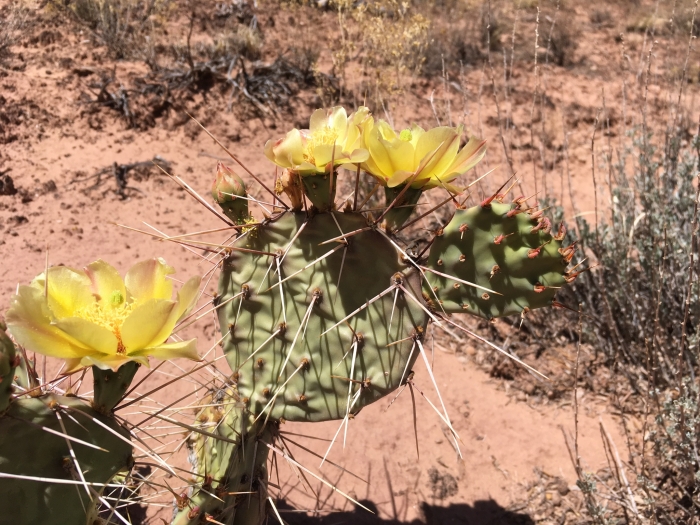Plains Pricklypear
(Opuntia polyacantha)
Plains Pricklypear (Opuntia polyacantha)
/
/

Cecelia Alexander
Public Domain




















































Estimated Native Range
Summary
This cactus is valued for its drought tolerance and unique appearance, making it suitable for xeriscaping and rock gardens. It is also used in native plant gardens and as ground cover in areas with poor soil. Plains Pricklypear requires full sun exposure and thrives in well-drained soils with low to very low water requirements. While it is generally low-maintenance, gardeners should be cautious of its sharp spines when handling. It is not known to have aggressive roots or significant disease problems, but overwatering can lead to root rot.CC BY-SA 4.0
Plant Description
- Plant Type: Succulent, Shrub
- Height: 0.3-1 feet
- Width: 6.5-10 feet
- Growth Rate: Rapid
- Flower Color: Yellow, Orange, Pink
- Flowering Season: Spring
- Leaf Retention: Evergreen
Growth Requirements
- Sun: Full Sun
- Water: Low, Very Low
- Drainage: Fast
Common Uses
Bee Garden, Bird Garden, Butterfly Garden, Deer Resistant, Drought Tolerant, Edible*Disclaimer: Easyscape's listed plant edibility is for informational use. Always verify the safety and proper identification of any plant before consumption., Erosion Control, Fire Resistant, Groundcover, Hummingbird Garden, Low Maintenance, Rock Garden, Salt Tolerant, Showy Flowers, Street Planting
Natural Habitat
Semi-arid plains, grasslands, and rocky outcrops in the Western United States and Mexico
Other Names
Common Names: Cliff Prickly-Pear, Hairy Prickly-Pear, Panhandle Pricklypear, Juniper Prickly-Pear, Plains Prickly-Pear, Starvation Prickly-Pear, Porcupine Prickly-Pear, Hedgehog Prickly-Pear, Nichol’s Prickly-Pear, Red-Spine Prickly-Pear
Scientific Names: , Opuntia polyacantha, Opuntia trichophora, Opuntia rhodantha, Opuntia polyacantha var. trichophora, Opuntia erinacea var. utahensis, Opuntia polyacantha var. rufispina, Opuntia erinacea var. ursina, Opuntia missouriensis, Opuntia ursina
GBIF Accepted Name: Opuntia polyacantha Haw.